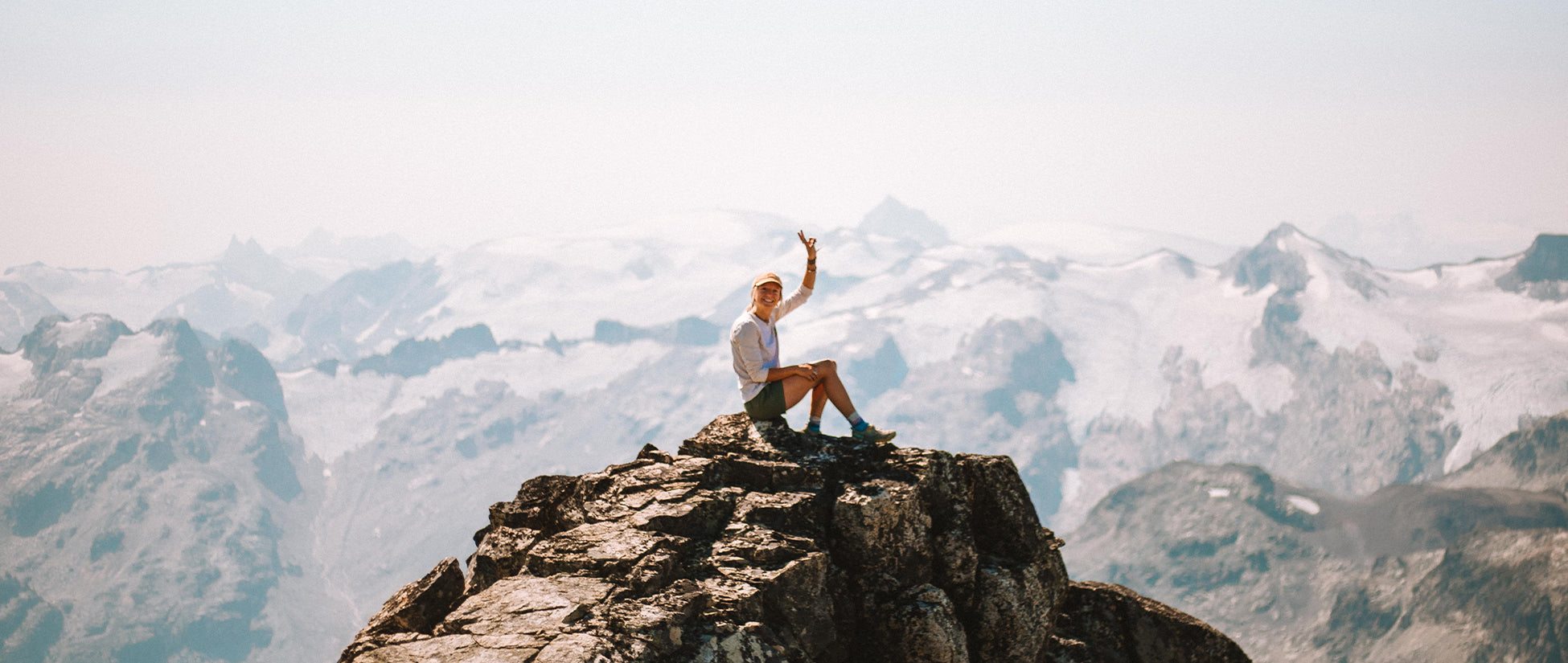Du fährst mit dem Finger über grüne Strichlinien, Landstraßen und verblasste Pfade – die gute alte Karte liegt ausgebreitet auf dem Küchentisch, während du versuchst, den Toastkrümeln und Kaffeeflecken auszuweichen. Die großen Straßen meidest du, und mit dampfender Tasse in der Hand beginnst du, die ersten Punkte zu verbinden – der Anfang eines Plans.
Wenn dann das Morgenlicht langsam durch den Vorhang blinzelt, heißt es: Schnürsenkel festziehen, Kappe auf, Karte zusammenfalten – und los. Wir stehen total auf analoge Abenteuer leichtes Gepäck und lose Routen mit genug Zeit, um auch mal stehen zu bleiben und die kleinen Dinge wahrzunehmen.

Vielleicht ist es eine Tageswanderung, die du schon länger geplant hattest – oder eine spontane Mission nach Feierabend, auf der Suche nach dem perfekten Sonnenuntergang. Ein Reset für Körper und Kopf, mit dem Wind im Rücken und einem Lächeln im Gesicht.
Wenn’s mal schwerer fällt, sich zu motivieren, oder der Kalender völlig überfüllt ist – keine Sorge, wir helfen dir dabei. Hier findest du Tipps und Tricks von unserem Passenger-Team, Geschichten von anderen Wanderfreunden und eine praktische Packliste zum Abhaken.


“Die Natur ist mein sicherer Ort – da kann ich einfach ich selbst sein und finde meine Balance mitten im Chaos des Alltags. Draußen zu sein, mit der Kamera, beim Wandern oder Roadtrippen mit meiner Freundin und unseren Tieren – das ist es, was mich gesund und ausgeglichen hält.“ – Amelia Le Brun
Egal ob ein Waldspaziergang, ein Küstenpfad oder eine Bergtour – die Grundlagen bleiben meist gleich. Trotzdem lohnt es sich, vorher das Wetter zu checken und sich ein wenig über die Route zu informieren. Hier eine Liste zum Loslegen:
Rucksack: Nicht zu groß, nicht zu klein – genau richtig..
Handy: Voll geladen, sicher ist sicher.
Powerbank: Falls der Akku mal nicht mitspielt.
Karte und Kompass: Oldschool, aber zuverlässig.
Wanderführer oder ausgedruckte Karten: Damit du nicht vom Pfad abkommst.
Stirnlampe: Für den frühen Start oder späten Rückweg.
Regenschutz für den Rucksack: Damit die Stulle trocken bleibt.
Kamera: Zum Innehalten und Festhalten.
Naturführer: Zum Nachschlagen, was da blüht, summt und raschelt.
Notizbuch & Stift: The best ideas come to you on the trail.
Ein gutes Buch: Die besten Ideen kommen oft unterwegs.
Trinkflasche: Genug trinken ist wichtig.

“Dieser Ort heißt Panorama Ridge im Garibaldi Provincial Park! Tag 1 unserer Tour ging über Panorama Ridge (ein 30 km Rundweg), Tag 2 führte uns zum Black Tusk (ein 15 km Abstecher). Es war großartig – perfektes Wetter (Sonnenbrand inklusive), tolle Truppe, unglaubliche Aussichten!“ – Kat Craats
Wenn du’s etwas technischer magst, schau dir auch unsere Checkliste fürs Backpacking und unseren Backpacking-Guide für Einsteiger an.
Wander-Outfits
Mit vielen Schritten vor dir solltest du auf gutes Schuhwerk achten – eingelaufene Wanderschuhe mit ordentlich Grip und guter Unterstützung machen den Unterschied. Ein paar Blasenpflaster im Rucksack schaden übrigens nie.


Beim Thema Kleidung setzen wir auf leichte, atmungsaktive Schichten. So kannst du flexibel reagieren, wenn’s wärmer oder kühler wird, ohne dass der Rucksack zu schwer wird. Viele im Team tragen aktuell unsere Mantra Recycled Leggings während die Jungs von den Drift All-Purpose Shorts zu den Stride Trail Jogger wechseln.
Wanderschuhe: Oder Trailschuhe, je nach Vorliebe.
Gute Socken: Warm, bequem, feuchtigkeitsregulierend.
Basisschicht: Ein schnelltrocknendes Shirt oder Funktionshemd.
Fleece: Wetterabhängig, aber immer beliebt.
Leichte Jacke: Wenn es windig wird.
Wasserdichte Jacke: Wenn’s richtig losgeht mit Regen.
Mütze oder Kappe: Am besten beides – je nach Stimmung und Wetter.
Nur Fußspuren hinterlassen
Ein fester Grundsatz für alle, die draußen unterwegs sind: Achte auf die Wege, halte die Natur sauber und sei respektvoll gegenüber Pflanzen und Tieren. Unsere Wanderpfade und Küstenwege sind wertvoll – und wir tragen die Verantwortung, sie zu schützen.

“"Das war ein kleiner Solo-Trip, bei dem ich zum Sonnenaufgang an einen wunderschönen Aussichtspunkt am Meer gewandert bin. Kaffee gekocht, das erste Licht genossen – einfach perfekt.“ – Darius


Atme tief ein, Schultern zurück – und los geht’s. Das nächste kleine Abenteuer wartet schon. #MyEscapism
FAQs (Häufig gestellte Fragen)
Wie finde ich den richtigen Rucksack für meine Wanderung?
Mach dich mit der Route vertraut, check das Wetter und überleg dir, wie viel Proviant und Wasser du brauchst. Für längere Tagestouren lohnt sich ein Rucksack mit guter Polsterung und verstellbaren Trägern definitiv. Hier findest du unsere Auswahl an Rucksäcken vielleicht ist ja der passende für dein nächstes Abenteuer dabei.
Was ziehe ich am besten an?
Setz auf Schichten: Feuchtigkeitsableitende Unterwäsche, isolierende Mitte und wasserdichte Außenschicht. Und immer eine Mütze und ein Extra-Paar Socken mit einpacken.
Welche Schuhe sind am besten zum Wandern?
Gut eingelaufene Wanderschuhe oder Trailschuhe mit gutem Grip und Knöchelstütze. Wichtig: Komfort geht vor! Blasenpflaster nicht vergessen.
Wie viel Wasser sollte ich auf einer Tageswanderung mitnehmen?
Etwa 2 Liter pro Person – bei heißem Wetter oder anstrengender Tour ruhig etwas mehr.
Wie kann ich meine Umweltbelastung beim Wandern minimieren?
Halt dich an die Leave No Trace-Prinzipien: Nimm deinen Müll (und den anderer) mit, bleib auf dem Weg, pflücke keine Pflanzen und störe keine Tiere.

Share:
Made To Roam: What To Wear Backpacking
One Million Trees Planted